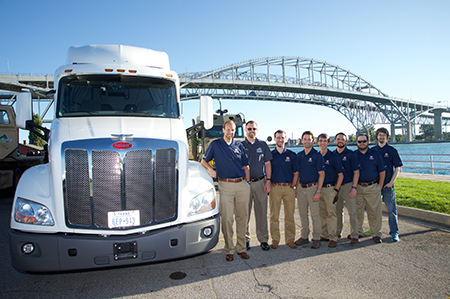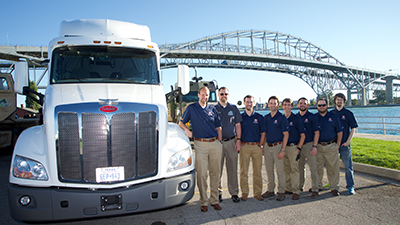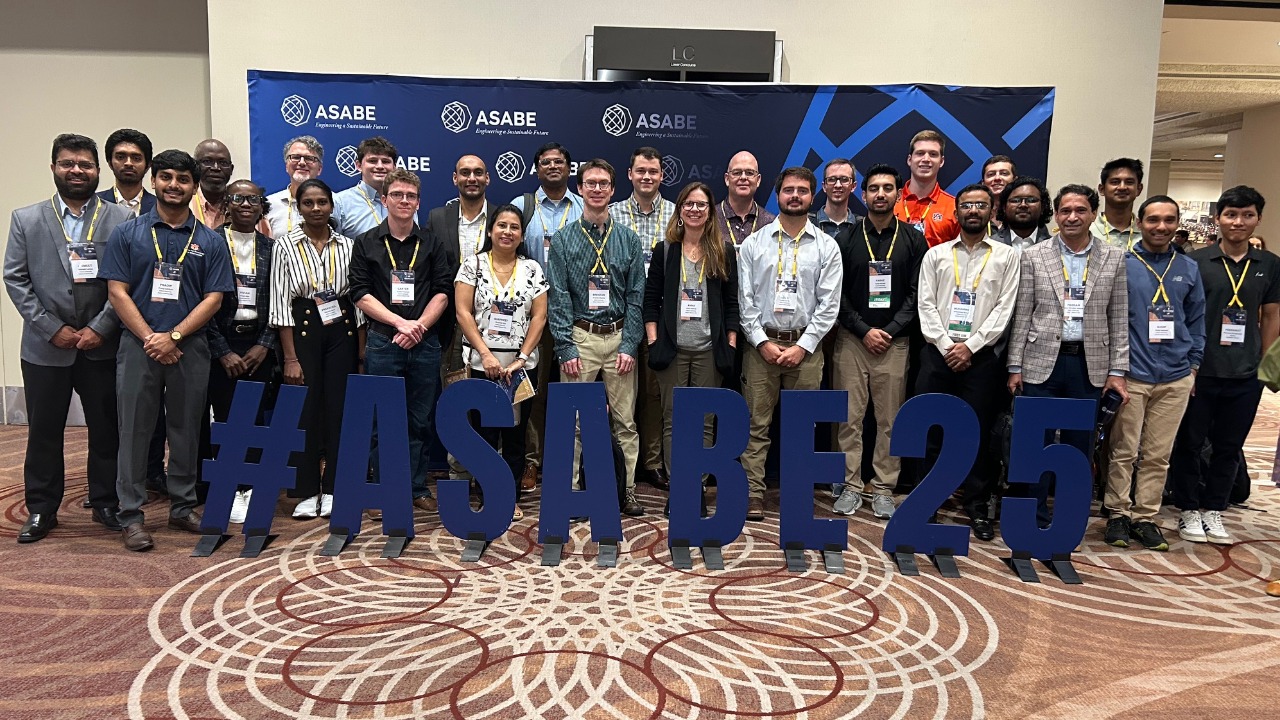Auburn Engineering contributes key technology to truck platooning demonstration
Auburn University today joined the U.S. Army Tank Automotive Research, Development and Engineering Center, or TARDEC, to conduct a live demonstration of autonomous vehicle technology traveling across the border between the U.S. and Canada. The capabilities of truck platoons were showcased traveling down Interstate 69, going east across the Blue Water Bridge connecting Port Huron with Ontario before returning to the U.S. The demonstration was conducted in cooperation with the Michigan Department of Transportation.
 |
| Researchers from GAVLAB and TARDEC are pictured in Port Huron, Mich. |
Truck platooning links two or more trucks using vehicle-to-vehicle wireless communications technology and sensors that allow them to maintain a set, close distance between each other automatically. Truck platooning generates tremendous returns in terms of increased fuel efficiencies, decreased traffic congestion and improved safety for both commercial and military applications.
"Auburn University and TARDEC researchers are advancing this technology to the point where it is ready for commercial and military uses," said David Bevly, director of Auburn University's GPS and Vehicle Dynamics Laboratory and professor of mechanical engineering. "Today's live demonstration under real-world traffic conditions highlights just how far this paradigm changing technology has come."
Auburn’s two Peterbilt 579 trucks led the mixed convoy of commercial and military trucks using autonomous platooning software that Bevly’s research group developed. The autonomy software utilizes GPS and other on-board vehicle data shared over Dedicated Short Range Communication (DSRC) radios in conjunction with radar measurements to allow the convoy to maintain a set distance between each truck.
"We are proud to contribute key technology and expertise to this groundbreaking demonstration as part of our longstanding partnership with TARDEC," said Chris Roberts, dean of the Samuel Ginn College of Engineering at Auburn University. "The important work Dr. Bevly and his autonomous vehicle research development team are engaged in with TARDEC will go a long way toward bringing this exciting, life-saving technology to commercial and military application."
The Army's vehicles in the convoy, two M915 "line haul" tractors carrying flatbed trailers loaded with cargo containers, are each equipped with TARDEC's Autonomous Mobility Appliqué System technology which enables a full range of capabilities, from driver-warning features like in today's commercial automobiles to fully-autonomous operation, which can move the vehicle along a path using pre-programmed waypoints.
"Driverless capabilities can do so much for our soldiers and their missions," said Bernie Theisen, project manager for TARDEC's leader-follower program. "We can move soldiers out of the convoy trucks and into missions where they're uniquely suited, and this technology can significantly increase the safety for those soldiers who do continue to operate the convoys."
On display at this demonstration are the vehicle's automated acceleration and deceleration features, which allow the vehicle to adjust its speed and braking with respect to instructions passed back to it from the lead vehicle.
Additionally, the Army's trucks are enabling the automated steering feature. With this capability, the truck's computer receives information from the lead vehicles and steers the truck accordingly. This is the first time the Army has tested this capability on a public roadway, says Theisen.
Media Contact: , chris.anthony@auburn.edu, 334.844.3447
GAVLAB researchers are shown at the truck platooning demonstration.





